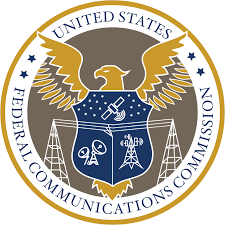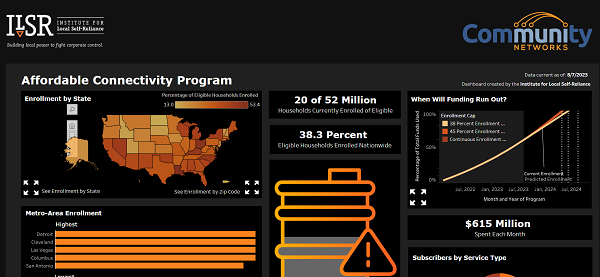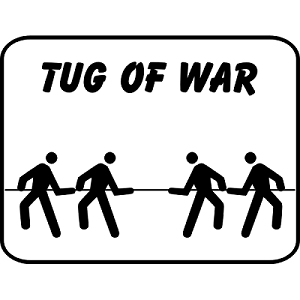
Fast, affordable Internet access for all.

It may not generate a lot of headlines in a national press obsessed with AI and billionaire fist fights, but the debate over the final version of the looming farm bill remains important all the same. Especially when it comes to the future of affordable broadband.
The farm bill, generally renewed every five years, provides U.S. policymakers the occasional opportunity to address agricultural and infrastructure issues essential to not only the basic functioning of the country, but the very survival of marginalized Americans.
That includes programs like the Supplemental Nutrition Assistance Program (SNAP, or “food stamps”), which provides affordable food to an estimated 41.9 million Americans–or roughly 12.5 percent of the U.S. population.
The bill has also proven essential to the ongoing maintenance and equitable distribution of modern infrastructure, including affordable broadband access. That includes the funding of essential programs such as the U.S Department of Agriculture’s ReConnect broadband grant program, and the Community Connect Grants program.

The farm bill may also soon play a key role in maintaining another key government program: the $14 billion Affordable Connectivity Program (ACP) currently overseen by the Federal Communications Commission (FCC).
Both Band Aid And Key Lifeline
During the peak of the pandemic, the FCC launched the Emergency Broadband Benefit (EBB) program, giving lower income Americans a $50 ($75 for those in tribal lands) discount off of their monthly broadband bill. Under the program, the government provides money to ISPs, which then offer discounted service to low-income users if they qualify and can run the complex gauntlet of rules to secure it.
In 2021, the program was renewed and renamed via the Infrastructure Investment and Jobs Act, though the monthly payout to the general public was reduced to $30 a month. According to the FCC, more than 20 million Americans are currently enrolled in the program.
In regions where municipal broadband deployments are common, the already inherently lower costs of municipal broadband–combined with the ACP discount–have in some instances driven the per household monthly cost of broadband access to close to zero.
Some of the national companies also offer $30 plans that are entirely offset by the subsidy, though they often offer much lower capacity connections.
The program hasn’t been without criticism. Giving money to regional monopolies to temporarily lower the high prices they created through a sustained, multi-decade assault on competition isn’t genuinely fixing the underlying problem of broadband affordability, one of the top obstacles to expanding access and adoption.
The FCC rarely embraces policies or penalties that seriously threaten regional monopoly power, has failed to accurately map broadband access, has struggled to maintain a modern, ambitious definition of acceptable broadband access, and is routinely absent when it comes to advocating for the interests of community-owned broadband alternatives.
But even the temporary relief ACP provides is useful. However, ILSR estimates suggest that the program will run out of money in 2024. Many lawmakers believe it makes sense to use the $1.5 trillion farm bill to both fund the ACP and mandate higher, more modern broadband speed standards for all new deployments.
Plan B for ACP?
The farm bill doesn’t represent the only shot of extending and funding the ACP. A bipartisan coalition of 45 lawmakers are simultaneously pushing for the ACP to be funded by other appropriation measures currently winding their way through the halls of Congress.
“We have a unique window of opportunity to ensure that every family and child—rural, urban, and suburban—have access to affordable broadband, and can thrive in the digital age,” the lawmakers said in a letter to Congressional leadership.
“ACP has become a lifeline for Americans, and we cannot afford to let it expire. Failure to extend funding would not only leave millions of families without access to the internet but also hinder our long-term competitiveness as a nation.”
Both the appropriations and farm bills face a looming September 30 deadline Congress seems unlikely to meet since both packages will require bipartisan consensus that’s increasingly difficult to reach. Many Republicans are not only keen on not expanding the scope of the bill, they’re looking to eliminate existing food assistance programs entirely.

If the ACP can’t be renewed, 20 million Americans would immediately be struck with significantly higher broadband costs, or simply have to forgo service.
"If Congress were to fail to appropriate new funds for the Affordable Connectivity Program, we would undermine the biggest broadband affordability program this nation has ever created. We would cut families off," FCC Chairman Jessica Rosenworcel recently told Congress.
ACP’s Renewal May Come At The Cost Of Other Valuable Broadband Programs
With widespread Congressional and industry support, it seems likely the ACP will be renewed through the farm bill or other appropriations bills—albeit probably after the September 30 deadline. But it also seems increasingly likely that renewal may come at the cost of one or several other government broadband programs.

The General Accounting Office (GAO) recently issued a report noting that U.S. broadband programs have become "fragmented and overlapping” across 15 different federal agencies, arguing that some kind of streamlining will be necessary to ensure efficiency.
“We identified at least 133 funding programs that could support increased broadband access—creating a fragmented, overlapping patchwork of funding, the GAO said. “This patchwork of programs could lead to wasteful duplication of funding and effort, and agencies use various approaches to avoid duplicative awards.”
In response, bipartisan legislation was recently introduced requiring the government to streamline existing government programs.
With the infrastructure bill’s creation of both the $14 billion ACP and the $42 billion BEAD (Broadband Equity And Deployment) program, some politicians and industry-funded think tanks are advocating for the elimination of existing government broadband programs, including ReConnect and even the FCC’s Lifeline program.
Groups like the NTCA–The Rural Broadband Association–disagree, noting that BEAD, the ACP and Lifeline all serve decidedly different functions.
“Any claim that BEAD or other grant programs somehow render the high-cost fund redundant or unnecessary therefore misses the mark on the importance of sustainability and affordability as core components of the lasting mission of universal service,” the NCTA’s Mike Romano recently told Light Reading.
It’s still possible that many government programs–several of which provide useful and decidedly different functions from the ACP and BEAD–could be sacrificed in the name of consensus.

Potential cuts could include the USDA’s ReConnect grant program, Telecommunications Infrastructure Program, Rural Broadband Program (RBP), Community Connect Grant Program (CCGP), and Distance Learning and Telemedicine Program (DLTP). A legal challenge by conservative activists could also spell doom for the FCC’s Lifeline program.
ReConnect has at times been funded via other legislation, including $2 billion from the infrastructure bill. Though the Congressional Research Service has suggested Congress could consider a longer-term funding mechanism for ReConnect through the 2023 farm bill. At the same time, some lawmakers are keen on seeing the USDA’s broadband funding expanded.
It’s far from clear which broadband programs will survive a massive and contentious government funding battle that’s expected to include everything from debates over new subsidies for lab-grown meat to the humane treatment of poultry, though delays and continued infighting are more than likely as equitable broadband access again takes center stage.
Monopoly Power Remains The Real Unaddressed Problem
Lost in the conversation about which government programs should be salvaged is the fact that even with a surplus of programs, policymakers still aren’t addressing the primary reason for spotty, expensive U.S. broadband access: regional monopoly power and its generation-long assault on meaningful competition.

Political and policy rhetoric about the “digital divide” often excludes solutions for the kind of harmful regional monopolization and industry consolidation that makes it difficult for smaller broadband competitors to survive.
Since the last farm bill was passed in 2018, the U.S. government has spent untold billions of dollars in a bid to shore up access to broadband.
But ILSR studies have consistently shown how subsidies alone aren’t capable of addressing the root cause(s) of broadband inequity. Real solutions have to address concentrated monopoly power and its impact on competition. While programs like the ACP are hugely beneficial for struggling Americans, they remain a band-aid for a much deeper problem.
A more equitable and sustainable path forward requires developing policies that take direct aim at monopoly power, as well as supporting the more than 900 communities driving popular, locally-owned broadband alternatives (though even in communities where costs are reasonable or deemed as widely “affordable,” there will likely remain a subset of any community who will need some form of subsidy to pay for service).
Eliminating a program currently providing aid to 20 million struggling Americans without first addressing the real cause of high broadband prices would be a painful disservice to Americans long trapped on the wrong side of the digital divide.
Header image of U.S. Capitol Building courtesy of Wikimedia Commons, Attribution-ShareAlike 3.0 Unported (CC BY-SA 3.0)
Inline Tug of War graphic courtesy of OpenClipart, CC0 1.0 Universal (CC0 1.0)
Public Domain Dedication
